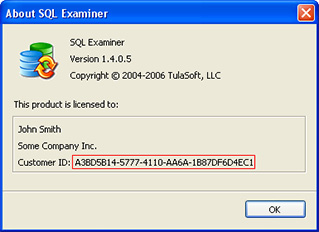SQL Examiner Suite 2022 release notes
November 16, 2021
It's been a long time since we released SQL Examiner Suite 2018, and now it's time for the 2022 version.
Support Timeframe
SQL Examiner Suite 2018 will no longer receive updates and non-critical fixes. However, we will fix critical issues if they happen suddenly for another six months after the 2022 version release date, until May 16, 2022. Support for the 2018 version will be discontinued after this date.
SQL Examiner Suite 2022 will be fully supported until the next major release and six months later, or until December 31, 2023, whichever is later. During this period, we guarantee that we will fix any bugs and issues, including possible compatibility issues with any further release of all supported on-premise and cloud databases. Also, we will do regular software updates and improvements.
SQL Examiner Suite 2022 highlights
- Official support for new RDBMS versions - Updated list of officially supported on-premise and cloud databases: SQL Server 2019, PostgreSQL 13, and more.
- Compare database schemas with SQL creation scripts - Now SQL Examiner can parse PostgreSQL, Oracle, and MySQL creation scripts.
- Oracle-related improvements - There are some enhancements for users who work with Oracle databases.
- SQL Data Examiner can create target tables on the fly - If you need to migrate data, don't bother creating a table in a target database before comparison.
- Email notifications for CLI - Enable email notifications for scheduled database comparison and synchronization jobs.
- Improved CSV comparison workflow - Further improvements for people who import data from CSV files with SQL Data Examiner.
- Various improvements - Other changes that are worth mentioning in this document.
- Detailed changelog - Last, but not least: we started providing a detailed changelog on our website.
- What's next? - Our plans for further development.
Continue reading to learn more about every new feature in detail.
New RDBMS versions support
SQL Examiner 2022 and SQL Data Examiner 2022 support all new features in the latest versions of the supported RDBMSs. This version ensures that you will get support for all the upcoming changes in these RDBMSs as well.
See the full list of supported comparison sources →
SQL Server 2019
SQL Examiner Suite 2022 supports features introduced in SQL Server 2019, including:
SENSITIVITY CLASSIFICATION- Graph Tables
- Edge Constraints
PostgreSQL 13
This is a big step from the last 2018 version of our products which supported versions up to PostgreSQL 9. Since that time, a few PostgreSQL versions were released. Now, we support versions up to the current one, PostgresSQL 13.3, and all new PostgresSQL features, including:
SECURITY POLICYobjectsCOLLATIONSTATISTICSMATERIALIZED VIEW- Comparison and synchronization of the OWNER property for all top-level objects
- New properties for
TABLE,PRIMARY KEY,INDEX, andIDENTITY STORED PROCEDURESINCLUDEproperty forINDEXEXCLUDE CONSTRAINT- Computable columns
MySQL 8
Added support for MySQL 8, including these features:
- Roles
EVENTobject- Indexes that contain expressions
- New object properties
Other supported on-premise RDBMSs
Though there are no noticeable changes in SQL Examiner's and SQL Data Examiner's interaction with Oracle or MariaDB, we have tested the products with the latest versions of these RDBMSs. At the time of the product release we officially support:
- Oracle 21c (released in December 2020)
- MariaDB 10.7.0 (released in September 2021)
Supported cloud databases
SQL Examiner Suite 2022 was tested with the following cloud-based databases (as of October 2021):
- Azure SQL Database
- Amazon RDS for SQL Server
- Amazon RDS for Oracle
- Amazon RDS for MySQL
- Amazon RDS for MariaDB
- Amazon RDS for PostgreSQL
SQL scripts as comparison source for PostgreSQL, Oracle and MySQL
Professional edition only
SQL Examiner has allowed you to compare SQL creation scripts since 2008, but only for SQL Server. The 2022 version brings script comparison to all supported databases: PostgreSQL, Oracle, and MySQL. This feature is often used to implement version control to database schemas.
Oracle-related improvements
In addition to Oracle 21c support, we've added improvements for SQL Examiner users who work with any Oracle version:
- SQL Examiner now compares and synchronizes User Defined Types
- Now, SQL Data Examiner can synchronize data fields that exceed 4KB without SQL*Loader. Previously, SQL Examiner had to use SQL*Loader for this task, which made the sync process more complicated.
SQL Data Examiner can create target tables on the fly
Previously, before you could migrate data with SQL Data Examiner, you should create target tables with SQL Examiner if there were no such tables in a target database.
Now you can compare a source table with "Empty Table," and SQL Data Examiner will create the table in the target database for you during synchronization.
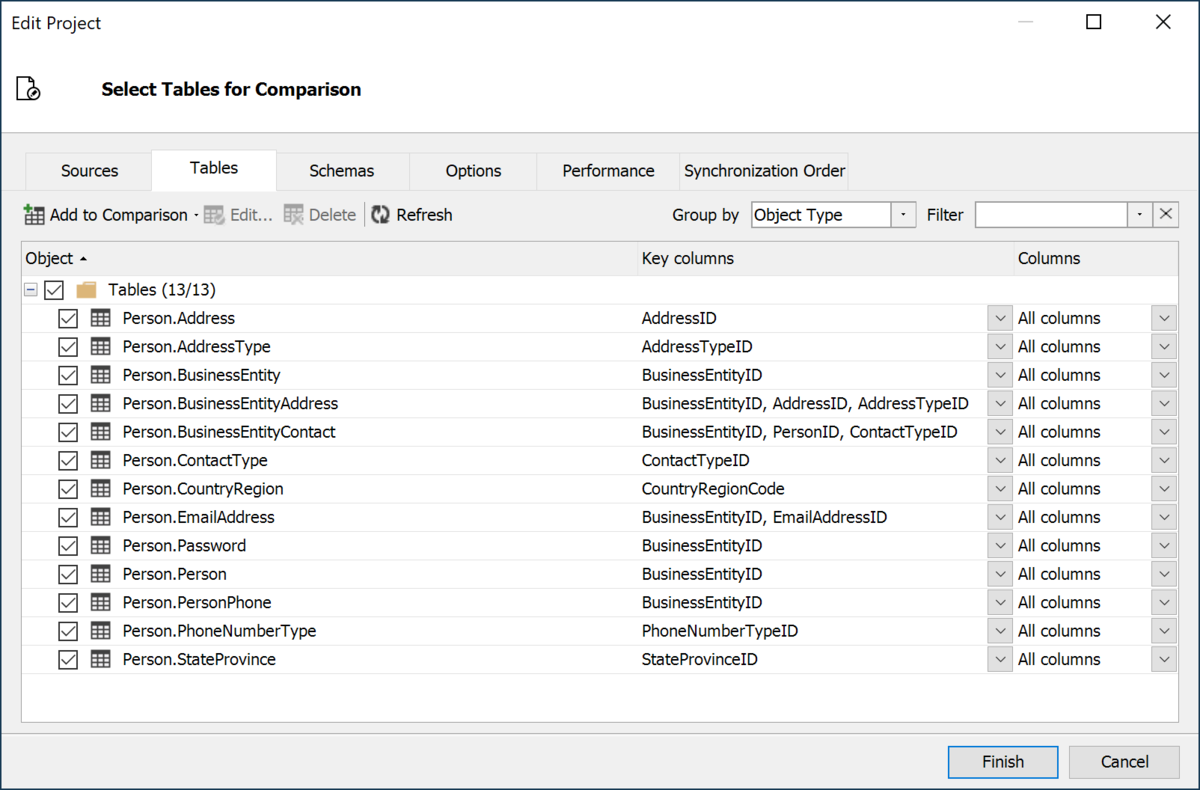
Email Notifications in CLI
CLI tools are available in the Professional edition only
You've been asking for this feature for a long time, so we've implemented it.
Now CLI versions of SQL Examiner and SQL Data Examiner can send email notifications on success or, more importantly, on failure.
This feature is especially useful when you run tools on a schedule. It can make you aware of workflow problems before they lead to a serious outcome.
Read more on how to set up Email Notifications →
See how it works in the screenshot below:
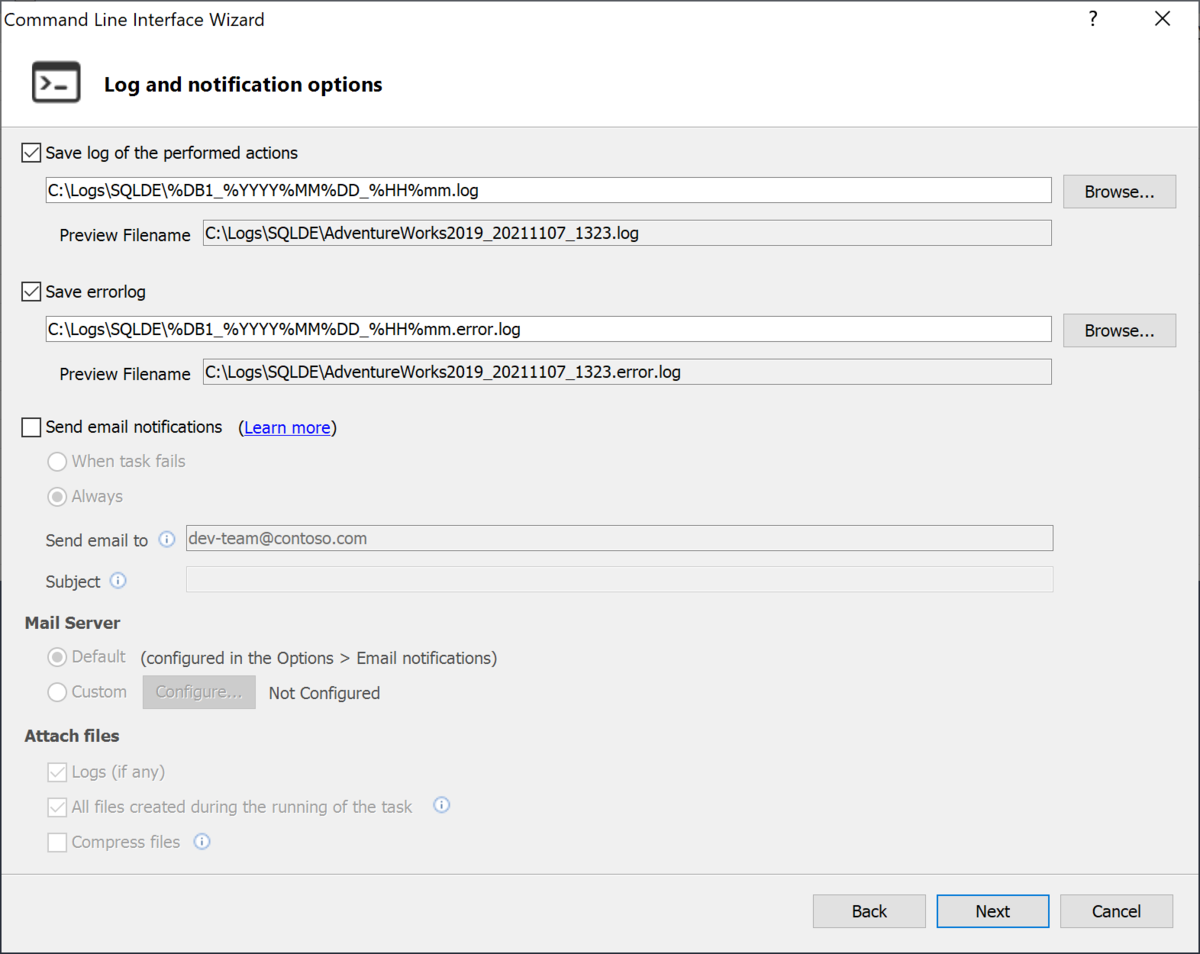
Improved CSV comparison workflow
Professional edition only
SQL Data Examiner has been able to import data from СSV files since 2010 (and to compare data in CSV files with the data in live databases), but it was able to work only with a single table per comparison (in "import to" or "compare with" scenarios).
Now, you can import data from multiple CSV files to multiple database tables at once. We came up with a new "virtual table" entity (though it's not named that way in the UI), which may contain a single CSV file or a set of CSV files with the same structure.
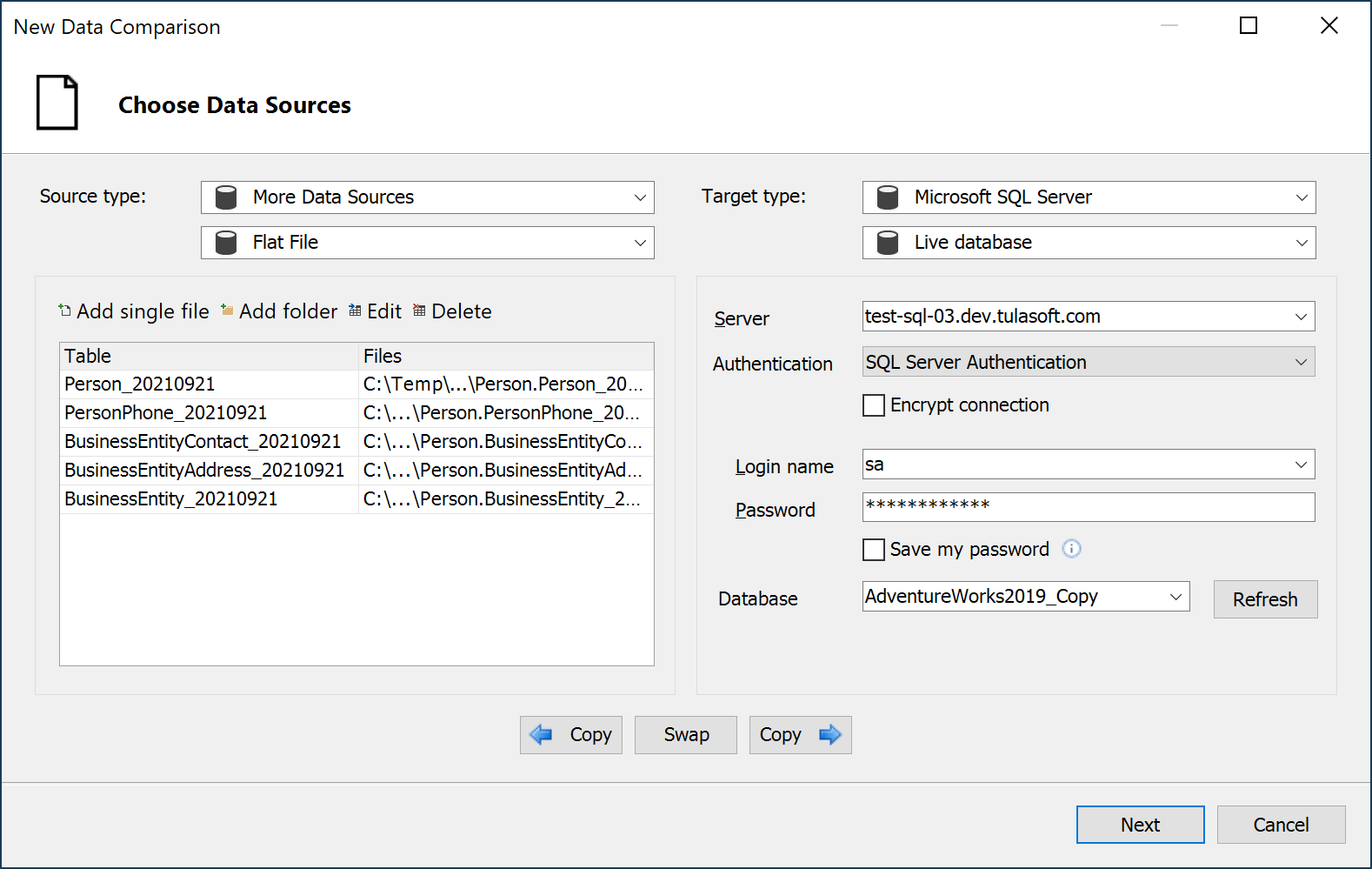
Also, CSV parsing errors won’t stop the comparison.
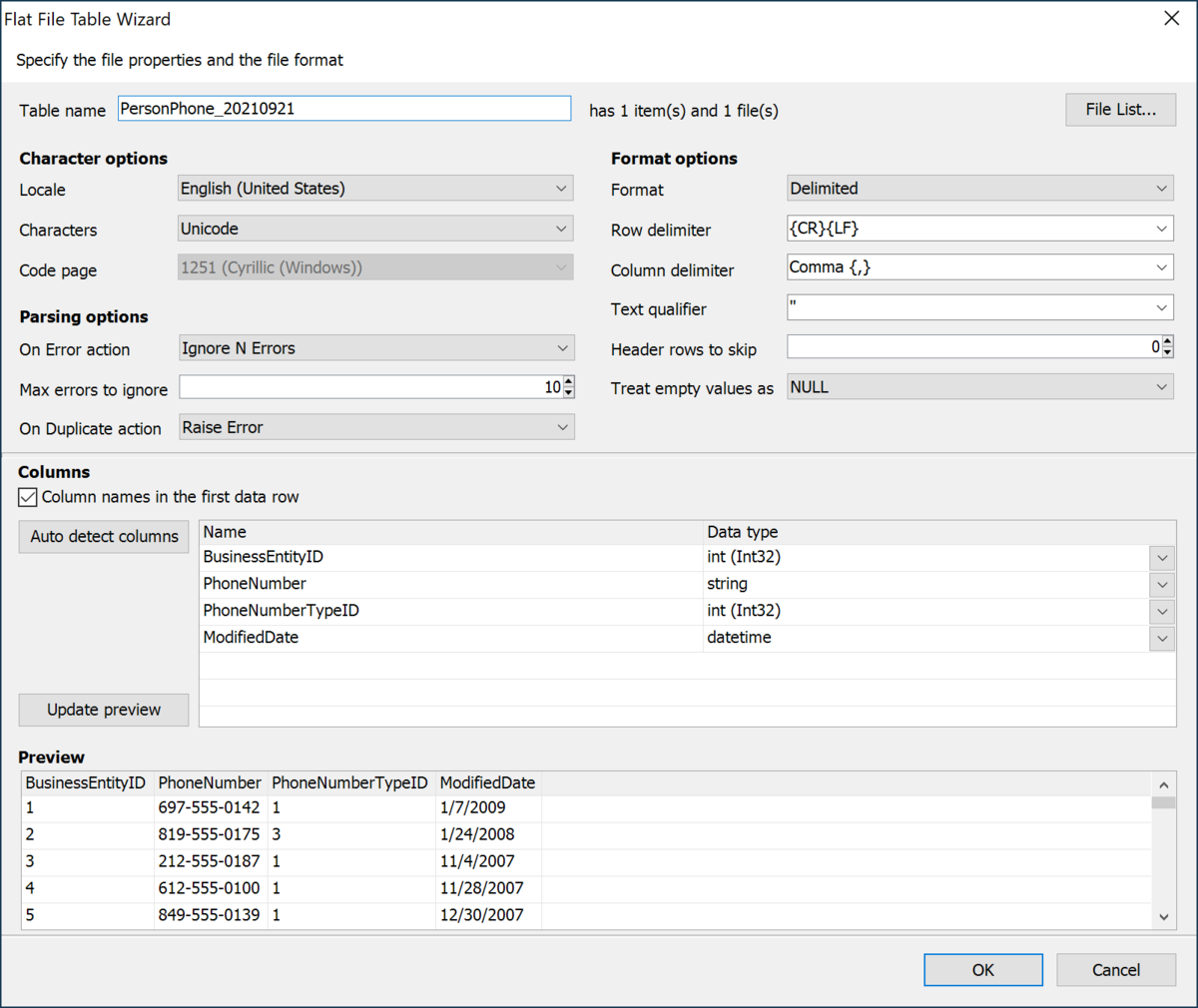
Various improvements
In addition to the above-mentioned, here are more improvements.
Updated New Comparison window
The New Comparison window layout has been rearranged.
There are separate dropdown lists for server type and source type. The second dropdown lists only the necessary choices. Check out the screenshot below:
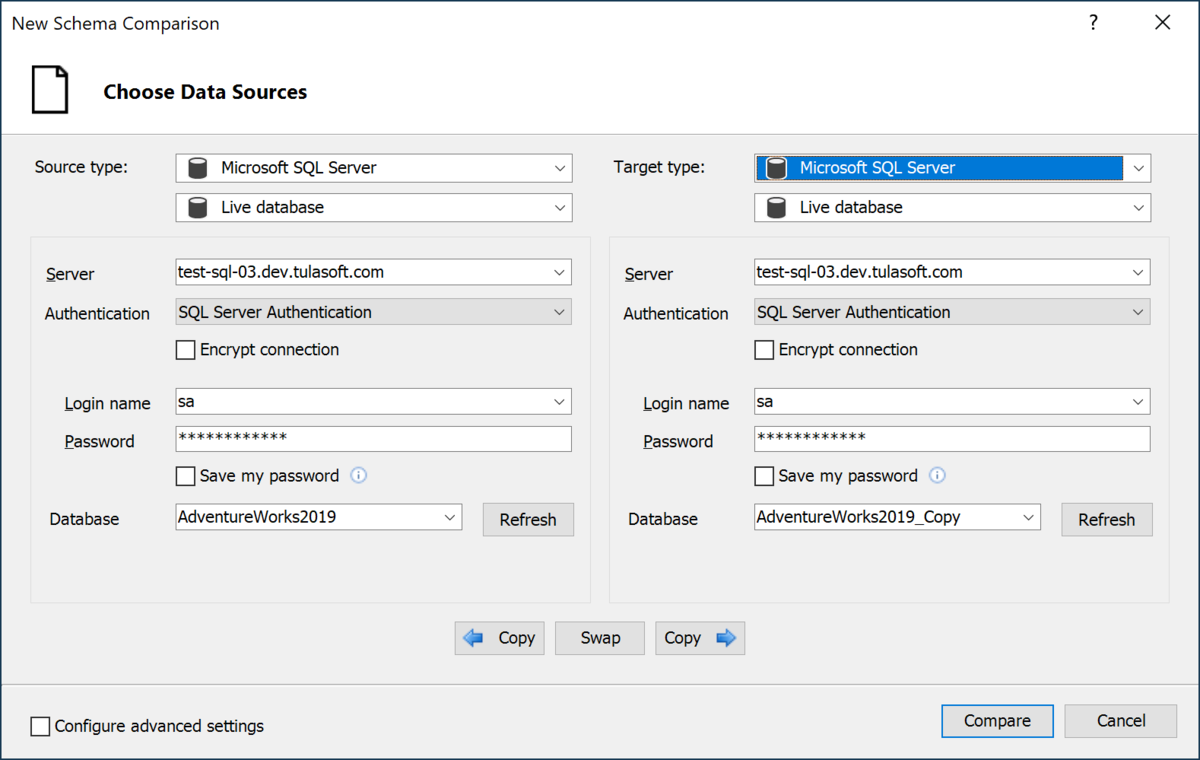
The Encrypt connection checkbox is now in the same dialog, and it's easier to find.
Task scheduler improvements
Along with the above-mentioned email notifications, we also display warning messages in the main program window if any of the scheduled tasks fail.
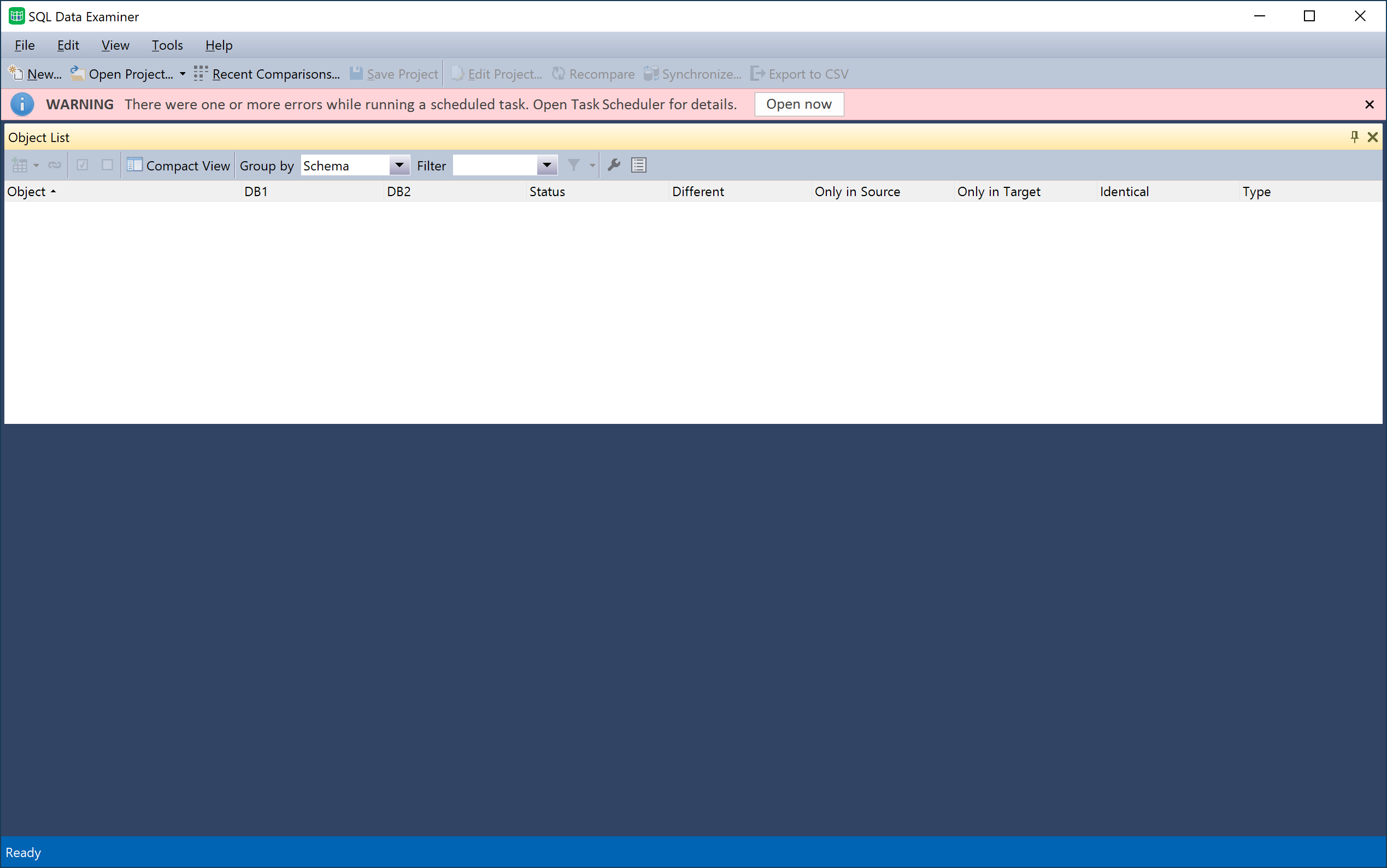
Simplified data difference tab in SQL Data Examiner
When there are many differences in the data in the source and target databases, it can be difficult to analyze them. So, we added a few improvements in the Different tab of SQL Data Examiner.
If the data in a column of both databases is the same, you will see one column instead of two:
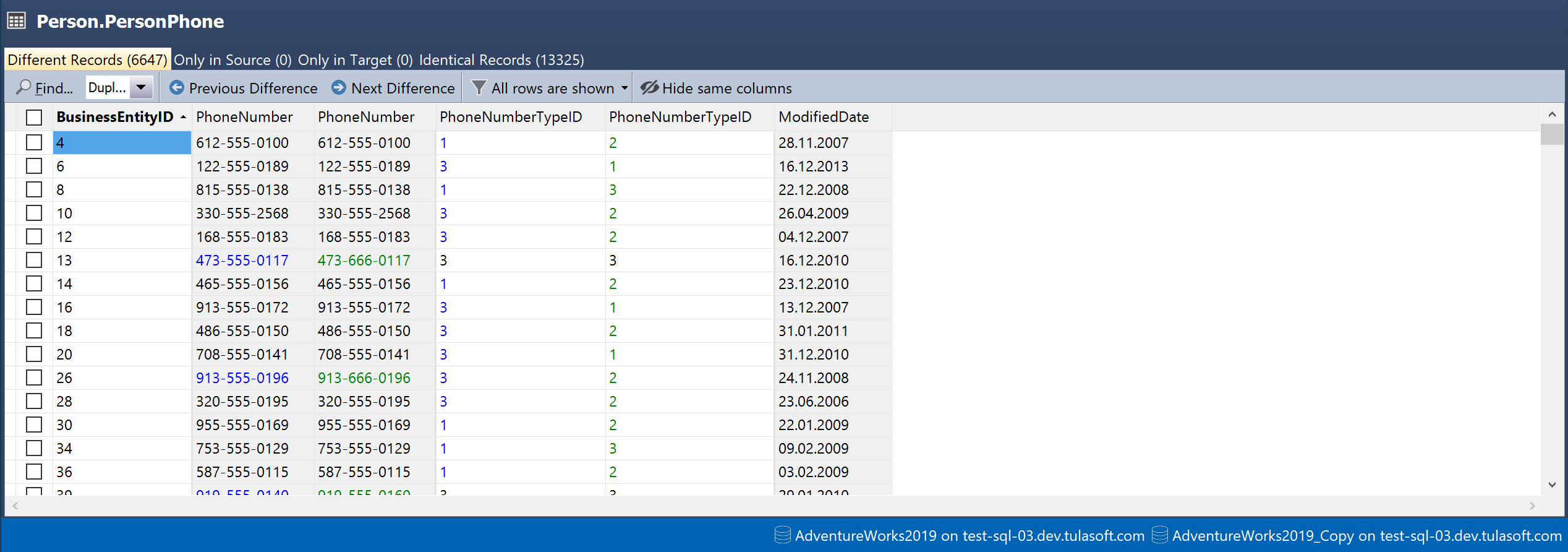
Moreover, you can hide columns that don’t have differences by clicking Hide same columns:
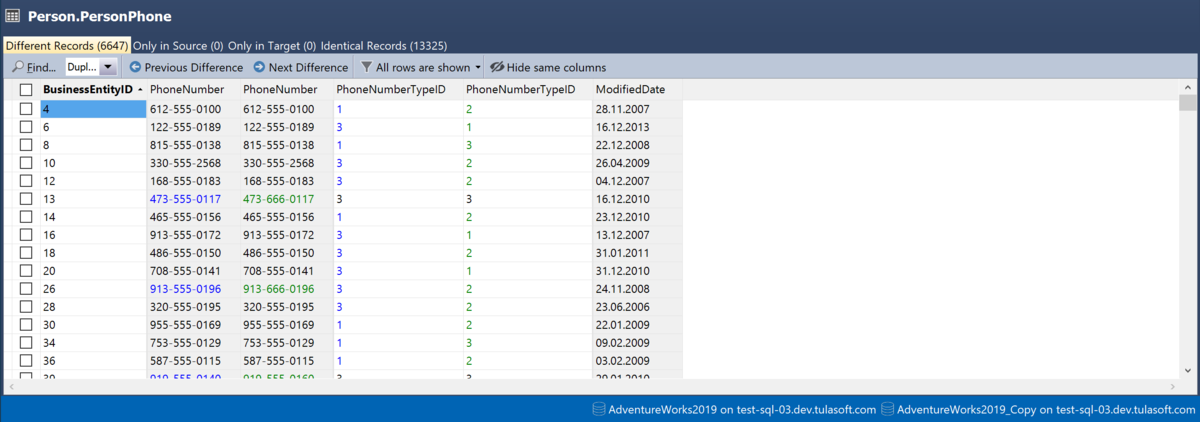
If you are looking for differences in certain columns only, you can display only rows with differences in those columns.
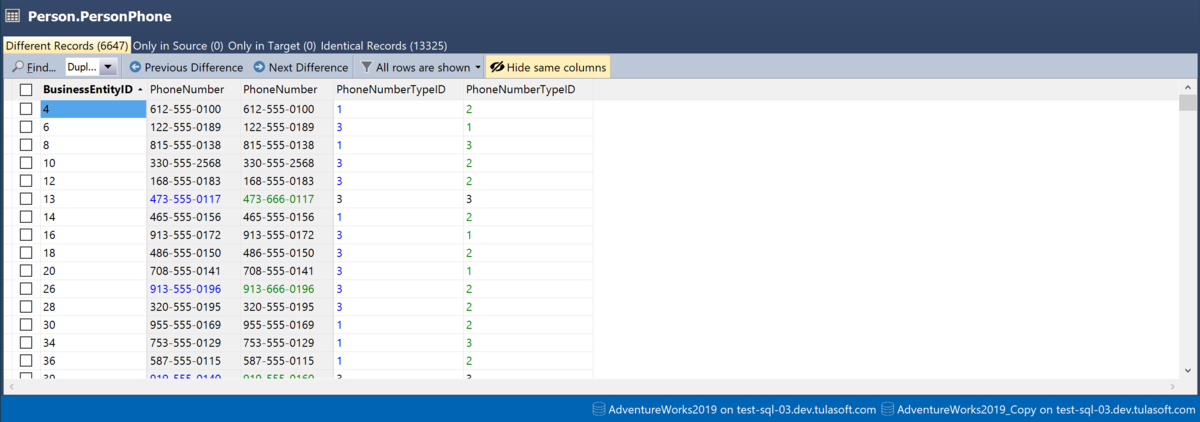
Updated templates for database schema scripting
SQL Examiner has supported scripting schemas for more than 10 years. In this version, we've added scripting templates similar to the ones in Visual Studio 2019.
The scripting template defines the folder structure, file naming, object naming, object distribution among files, etc.
Detailed changelog
Starting with this release, we've started publishing a detailed changelog for all released updates:
See the SQL Examiner Suite 2022 changelog
Also, we added a detailed changelog for all releases of the previous SQL Examiner Suite 2018. There have been more than 200 new updates over the past 4 years!
Check out the SQL Examiner Suite 2018 changelog
What's next?
We will continue developing the 2022 version and we are happy to share our plans.
First, we are going to adjust the UI to improve the overall look and feel of the tool in accordance with the latest trends. At the same time, the UX will remain familiar to our users.
And, of course, we will support all changes that DBMS vendors might make to their products.
Stay tuned.
